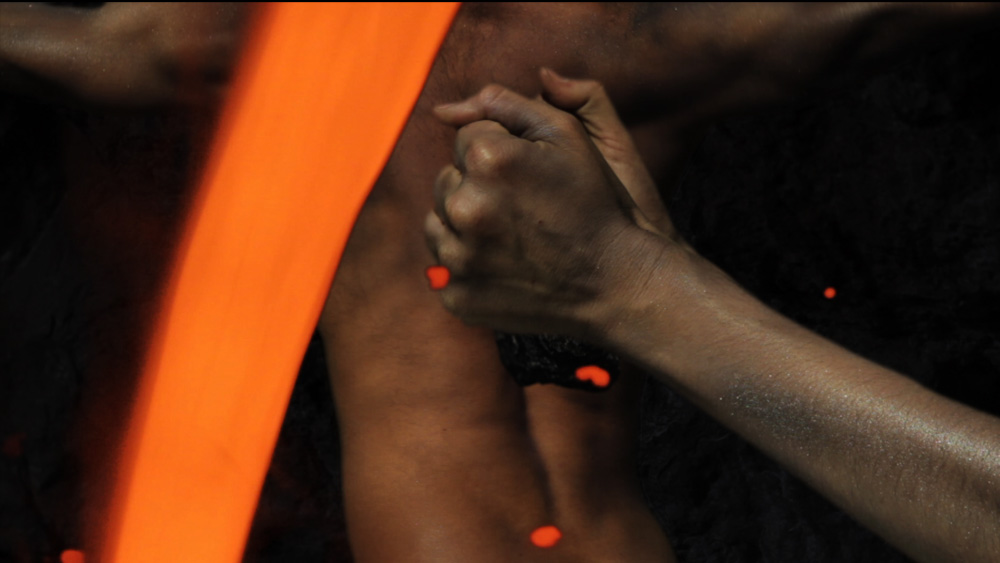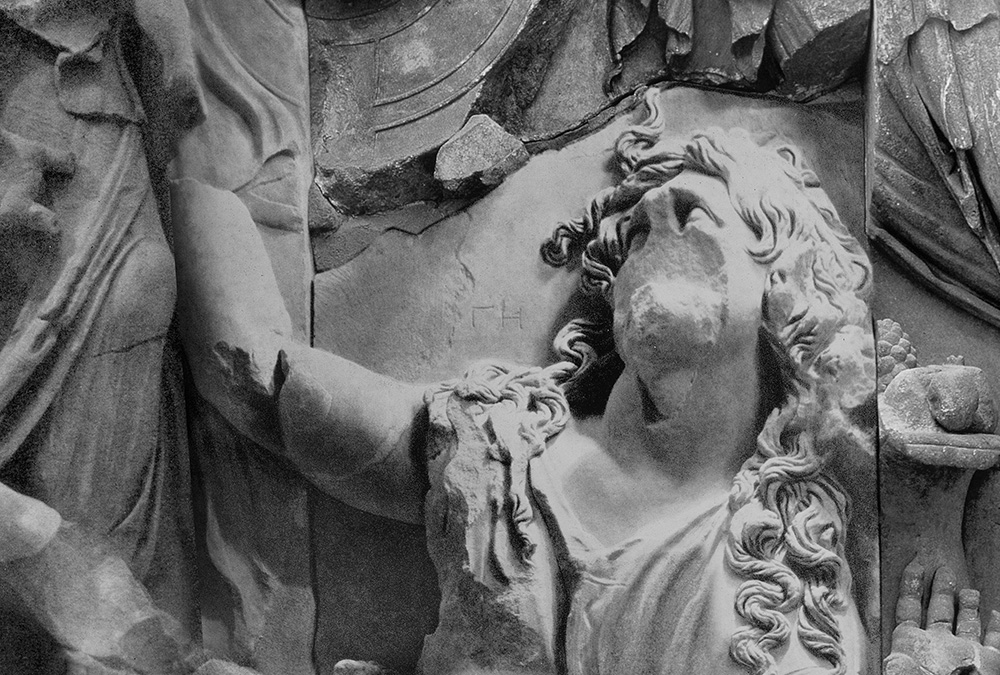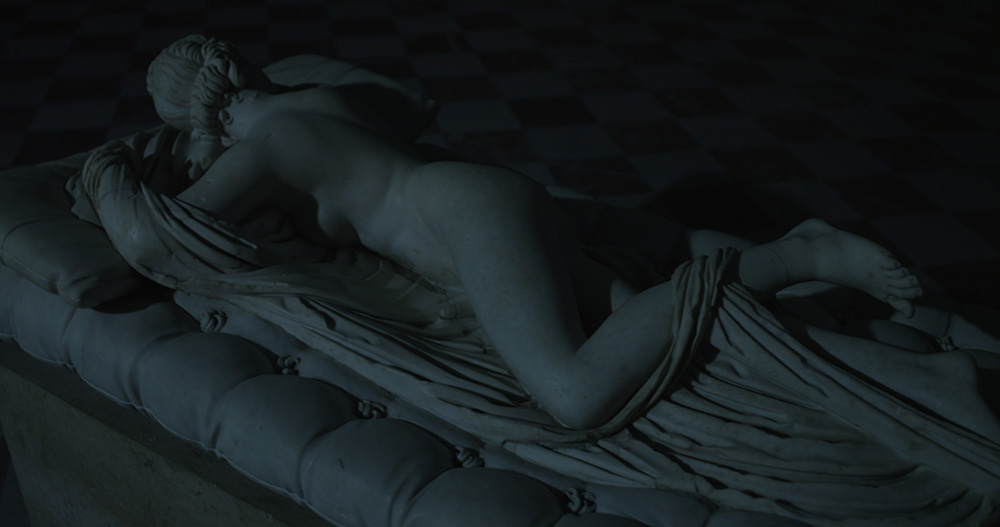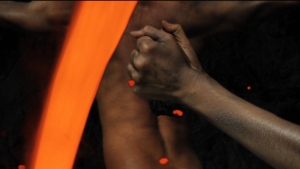

Sculpture on Screen. The Very Impress of the Object
In London, in 1855, a speaker was giving a lecture about the Cathedral of Notre Dame in Paris. Already able to show his audience impressive photographic slides of the sculpture over the Western Portal, the speaker suggested that the image was so truthful that it might be “the very impress of the object”.
The notion that the object which is photographed literally leaves its impression on the film is an illusion, and yet the films in this exhibition get so close to sculpture that we almost feel its impress.
Classical sculpture is no longer part of our curriculum and seems increasingly remote. And yet it is notably present in the work of contemporary artists, especially in film, and through film they bring it alive.
This exhibition, with films by seven artists working across Europe, explores the fascination of sculpture for the film-maker. In so doing it takes us into museums from the Musée du Louvre to the Capitoline Museum, from Paris to Rome and thence to Athens, via Berlin, Munich and London.
Sculpture’s very stillness, and its silence, seem to provoke the artist into using the moving image. These pieces explore the ways in which antique sculpture – whether complete or fragmented, on display or in the reserves, unique or in reproduction – is interesting for artists and can still evoke questions about art and power. Their works invite us to spend time with still objects, getting to know them better
Curator: Penelope Curtis
Anja Kirschner & David Panos
Ultimate Substance
HD video still, 2012.
Anja Kirschner and David Panos made this work at the height of the 2008 financial crisis. Their research into systems of market value and exchange led to their interest in Ancient Athenian coinage. Coinage is still both part of everyday life and a highly sophisticated conceptual system.
This film touches on that system in contrasting the raw metal which came from mines near Athens with the finished product, one which, like art, depends on systems of belief and aesthetic judgement to give it value. The film is both very physical and highly cerebral; the disjunction gives it strength.


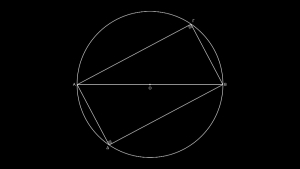
Fiona Tan
Inventory
HD and video installation, 2012. Colour, stereo, duration 17 min., repeats every 20 minutes. 6 safety masters, 3 video projectors (3:4), 3 HD projectors (16:9), 6 sync media players, network hub, amplifier, stereo speakers. Courtesy the artist and Frith Street Gallery, Londo. Photo Credits for Images. Label: GeoOfTimeMudam. Photo credit: Aurélien Mole / Mudam Luxembourg
Fiona Tan made this film in the John Soane’s Museum in London. Soane was a great collector of bits and pieces from the classical past; as an architect he liked to gather details and arrange them in his house. These compositions are still on view today nearly 200 years later.
Tan was conscious of working as an artist within a long artistic tradition, whereby young artists copy from the works of the past. She felt she had to rise to the challenge.
Rather than opting for one kind of medium, as she would normally do, here she decided to use all the kinds of cameras and film that make up her vocabulary. In this way her eclecticism echoes that of the collector, and together they each compile inventories, of types of object, or of types of medium.
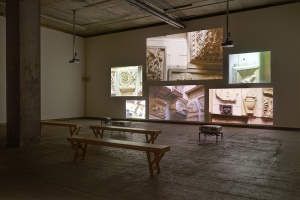

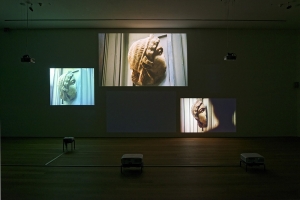
Lonnie van Brummelen & Siebren de Haan
Monument to Another Man’s Fatherland: Revolt of the Giants – reconstructed by reproductions, 2008-2009
35mm film stills
Lonnie van Brummelen and Siebren de Haan made this work in response to the challenges of copyright restrictions. Having at first intended to film the Pergamon Altar in Berlin, they ended up by finding themselves gathering printed reproductions.
This painstaking search began as a necessity, but ended as something that was not just pleasurable, but even liberating. Their research brought them closer to details of the altar, printed at different times. In the end they found most parts, and succeeded in stitching together a nearly complete overview. This act of restoring fragments is close to what has happened with most antique sculpture. In doing so they also found themselves feeling that they began to have access to a classical past from which they had previously felt excluded.
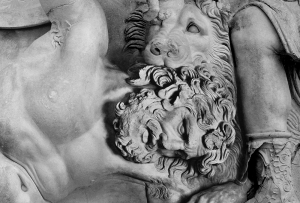

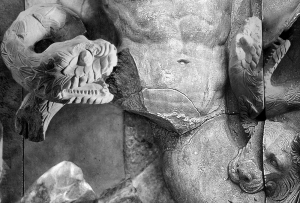
Mark Lewis
Nude
6k transferred to 2k, 5’49”, 2015. Film still courtesy and copyright the artist and Daniel Faria Gallery.
Mark Lewis has made many films, of many subjects. Sculpture is just one thing he has explored in seeking to analyse the way we look at objects, and, perhaps also, the way they look at us.
A small series of five short films was made in the Musée du Louvre, and one of them focuses on this famous work: the Sleeping Hermaphrodite. This sculpture demands to be walked around before it reveals its full identity.
Although this sculpture is always on show, the film is enriched by the fact that it was filmed after hours. Its nocturnal aspect seems suitable for a sleeping subject imbued with sexuality. This film makes us think about the relationship between looking and gender, and seems to allow us privileged access to something secret.
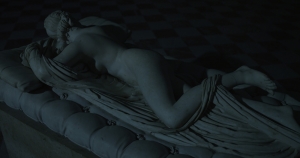
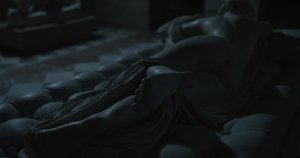

Rosa Barba
The Hidden Conference: A Fractured Play
35-mm film, color, optical sound, 5 min. 2015. Film still © Rosa Barba
Rosa Barba is interested in archaeology, and in the traces left on surfaces, at all scales. Her work is normally made on film, and its subjects are varied, but she has shown a special interest in the store-rooms of museums, focusing on paintings and especially on sculpture.
At different times Barba got permission to film the stores of London’s Tate, Berlin’s Neue Nationalgalerie, and the Capitolini Museum in Rome, shown here. In this case the sculptures are pieces which are unlikely to be shown publicly, or which are waiting restoration.
Barba talks of somehow restoring the sculptures with her film, simply by giving them attention, and thereby seeking to understand them better. They may contain some kind of secret content, and her film is like an almost forensic investigation.
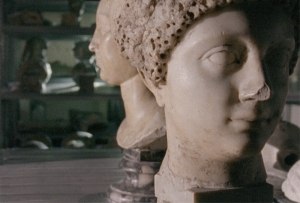
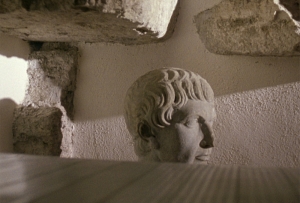
Header photo: © Ricardo Oliveira Alves
